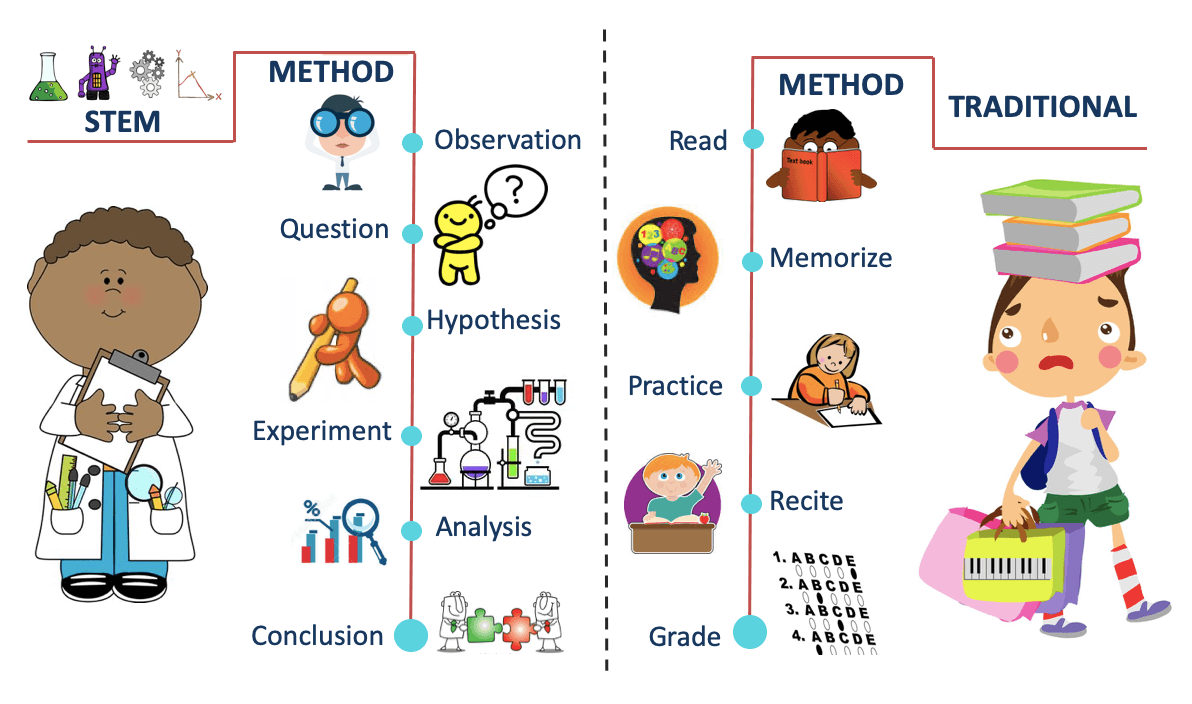In the current phase of technological revolution, innovations have become a part of everyday life for humans. Every now and then we hear the advancements happening across the sectors. Seldom we hear about developments and innovations in education, especially in the early years of learning.
This is gradually leading to a drop in learning acumen as traditional education is more of rote learning, missing on inculcating the right mindset. Realizing this gap in learning, the researchers in the education field have come up with STEM pedagogy. STEM brings about a paradigm shift in early learning and aims to keep the curiosity and genius streak of the kids intact through the growing years.
The term “STEM” regularly features education policies, curriculum choices, skill sets, employment, and workforce strategy. The acronym rose to the limelight after a meeting on science education was held at the US National Science Foundation. It later gained momentum when then-President Barack Obama stressed the need for STEM education for the United States of America to maintain its global leadership.

How is STEM education different from traditional education methods?
STEM is not just an acronym for Science, Technology, Engineering and Mathematics but an education method that integrates all these subjects.
It addresses the concerns that these disciplines or subjects are often taught in isolation while the fact is that they are all intertwined. It is a cohesive inter-disciplinary approach based on hands-on learning.
In today’s world, it is impossible to dissimilate these fields from one another. Pick any item from your household or office and try to fit it in just any one of the STEM subjects. You will find it impossible to do so, for everything is integrated with each other.
Science and Math lead to technology development, which is then integrated with engineering to make it useful in our life.
STEM encourages kids to experiment, make mistakes and learn from their own experiences to reach correct outcomes, rather than relying on what the textbook says.
Critical thinking, logical analysis, inquiry, and project-based learning are the keystones in STEM education. It boosts the curiosity in the kids, making the learning process fun, relevant and everlasting.
This is a paradigm shift from traditional education, which vitally lacks hands-on learning, to learning that is much better and deeper.
A key flaw with isolated learning is that often students are unable to apply the concepts learned to actual problems, lowering their productivity or understandability and hence implementation.

Problem solving is a major skill set and the current education system does not address it.
If queries or learning gaps are not addressed in the early years, things get worse when the difficulty level of the subjects rises over time. This loose end in basic education leads to fear for the subject going ahead – all due to the inherent lag in traditional education. STEM education assures there is no disconnect in the understanding of concepts by helping students work on the applications.
Taking a very basic example for initial years, math is introduced to kids with number learning, like 1, 2, 3, and so on. Kids don’t understand why they are being taught numbers and why less/more cannot suffice in place of numbers. On the other hands, asking questions like how much more or how less can immediately get them to understand the sense behind numbers and quantification.
What is imperative to understanding is how concepts taught are related to the real-world and how learning them will help children solve their day-to-day problems. Similarly, playing board games, blending math with arts & patterns from the surroundings can boost kid’s understanding and interest in the subject, leaving no space for anxiety. This is how STEM learning happens for every discipline.



Replies